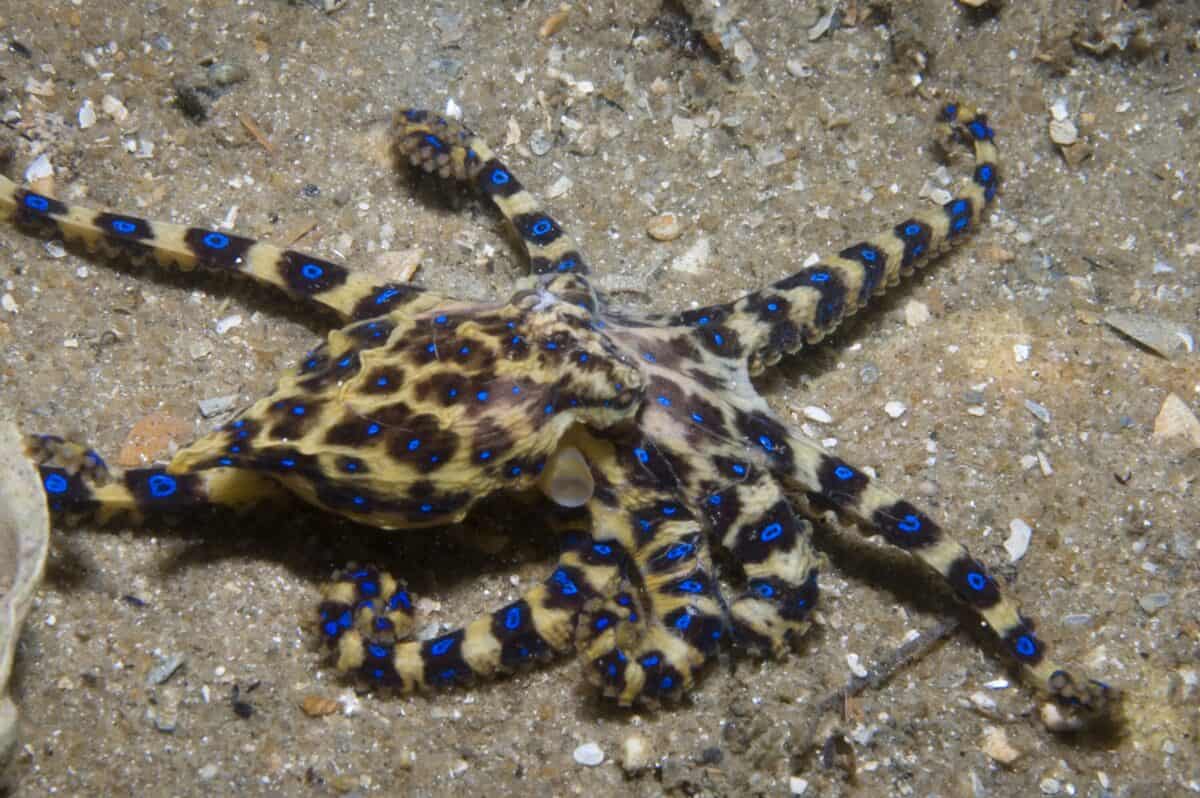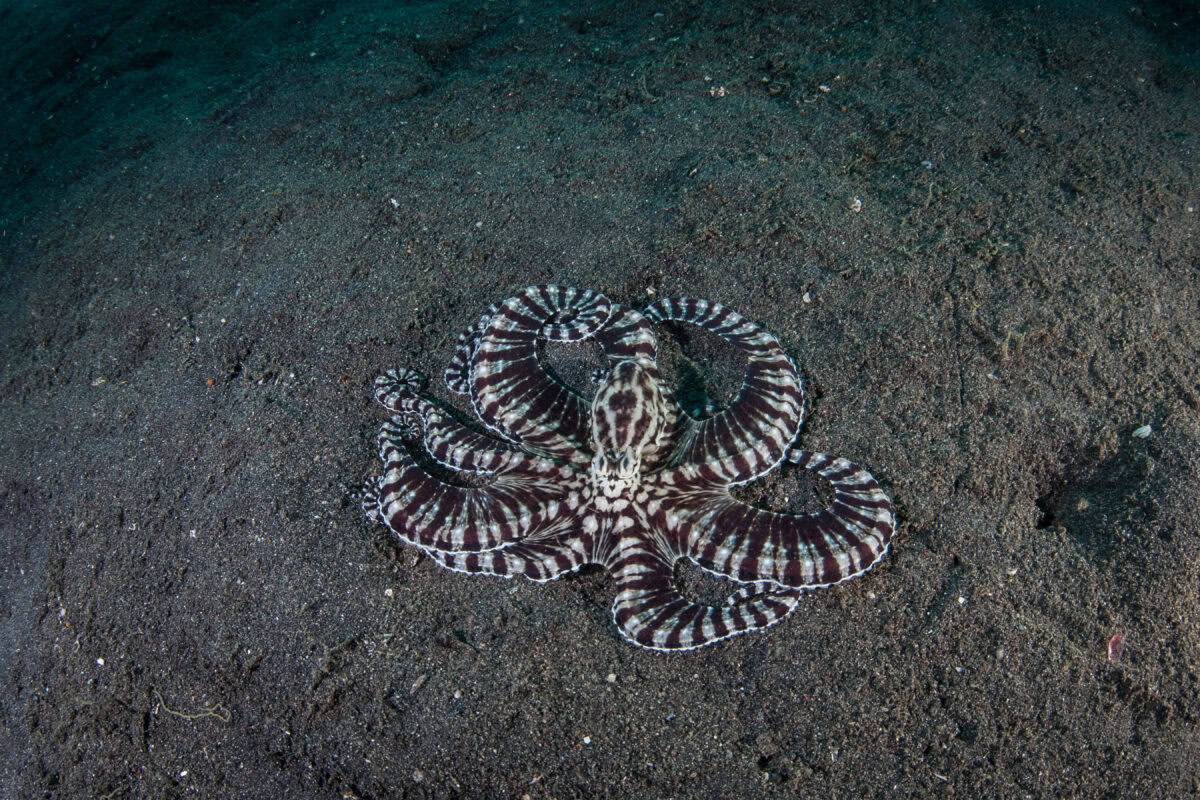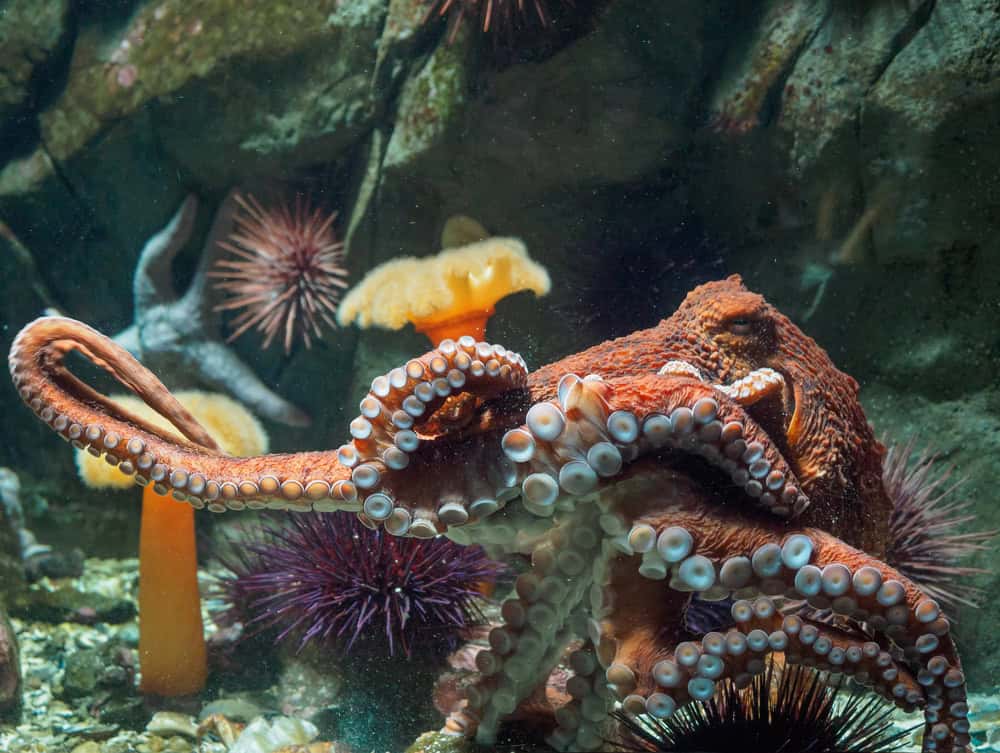Off the Pacific coastline lies the remarkable and expansive realm of the octopus. Among these fascinating creatures, the largest ever recorded was discovered off the coast of Washington. This article delves into the world of this extraordinary giant, offering intriguing insights into its biology, behavior, and the environment it calls home.
The Giant of the Sea An Overview

The giant Pacific octopus (Enteroctopus dofleini) holds the title for being the world’s largest octopus species. These remarkable cephalopods can grow to astonishing sizes, and the largest specimen ever recorded hailed from the waters near Washington state. This particular octopus weighed a staggering 600 pounds and spread to an impressive 30 feet in length, showcasing the incredible diversity and potential size of this species.
Habitat: Where Do These Giants Live?

The Pacific Ocean, particularly the nutrient-rich waters off the coast of Washington, provides an ideal habitat for the giant Pacific octopus. These creatures favor the rocky substrates and kelp forests where they can easily camouflage and hunt for food. The diverse marine environment supports a plethora of prey species, contributing to the large size these octopuses can achieve.
Physical Characteristics What Makes Them Unique?

Giant Pacific octopuses are renowned for their distinctive reddish-brown skin, large bulbous mantle, and long, muscular arms. Each of these eight arms is lined with powerful suckers, which they use to capture prey and sense their surroundings. Their camouflaging abilities are exceptional, allowing them to change both color and texture to blend seamlessly with underwater environments.
Behavior and Intelligence Uncovering the Mind of a Giant

Octopuses are highly intelligent creatures, known for their problem-solving skills and curiosity. The giant Pacific octopus is no exception, displaying complex behaviors such as opening jars to retrieve food and navigating mazes. They are solitary animals, often residing in dens hidden among rocks or crevices, emerging primarily at night to hunt.
Diet The Gourmet Preferences of a Giant Octopus

The diet of a giant Pacific octopus includes a variety of marine organisms. They primarily hunt crabs, clams, fish, and even smaller octopuses. With their strong beak, they can easily crack open shells to access the nutrient-rich meat inside, playing a vital role in controlling prey populations in their ecosystem.
Lifespan The Fleeting Glory of a Titan

Despite their size, giant Pacific octopuses have relatively short lifespans, typically living around three to five years. Their life cycle is marked by rapid growth and a single reproductive event at the end of their life, after which they experience senescence and eventually die, often leaving behind a legacy of thousands of eggs.
Reproduction The Next Generation

The reproductive strategy of the giant Pacific octopus is quite remarkable. During mating, the male uses a specialized arm called a hectocotylus to transfer spermatophores to the female. After mating, the female lays thousands of eggs and dedicates herself entirely to their care until they hatch. This period of maternal devotion leaves a significant impact on the survival of the species.
Conservation Status Protecting These Ocean Giants

Currently, the giant Pacific octopus is not considered endangered. However, like many marine animals, they face threats from overfishing, habitat destruction, and climate change. Conservation efforts focus on maintaining healthy marine environments and sustainable fisheries to ensure the continued survival of these ocean giants.
Research and Exploration Unveiling the Mysteries

Marine biologists continue to study these extraordinary creatures to better understand their biology and ecological role. Research efforts include observation of their behavior in the wild, genetic studies to understand population dynamics, and the impact of environmental changes. These studies provide critical insights that can aid in conservation strategies.
Cultural Significance Octopuses in Lore and Legend

Throughout history, octopuses have intrigued and inspired cultures worldwide, often depicted as mythical creatures of intelligence and mystery. This fascination continues today, as they remain a popular subject in marine documentaries, art, and literature, symbolizing the allure and mystery of the sea.
The Ecological Role Balancing Ocean Life

The giant Pacific octopus plays a crucial ecological role in its marine habitat. By regulating prey populations, they help maintain the balance of the ecosystem. As both predator and prey, they are integral components of the intricate web of ocean life, influencing the health and diversity of marine environments.
Conclusion: The Legacy of the Largest Octopus

The discovery of the largest octopus ever recorded off the coast of Washington highlights the extraordinary capabilities of the giant Pacific octopus. These magnificent creatures continue to captivate scientists and the public alike, serving as a reminder of the ocean’s boundless mysteries. Protecting their environment ensures that future generations can marvel at and learn from these incredible giants of the sea.
- The Secretary Bird A Raptor That Hunts on Foot - August 9, 2025
- 10 Dog Breed Restrictions That Stir Controversy in U.S. States - August 9, 2025
- 13 Animals That Outsmart Their Predators - August 9, 2025

